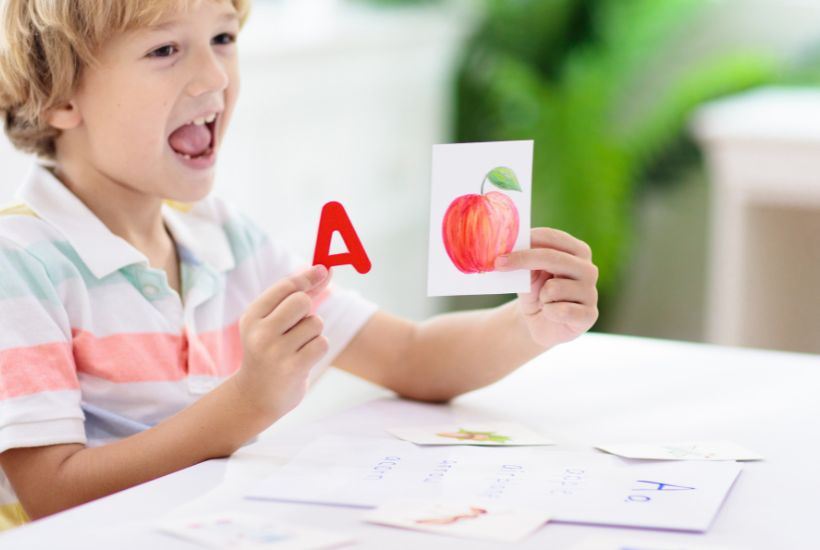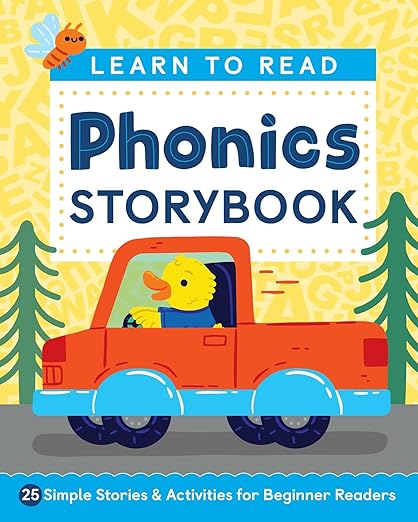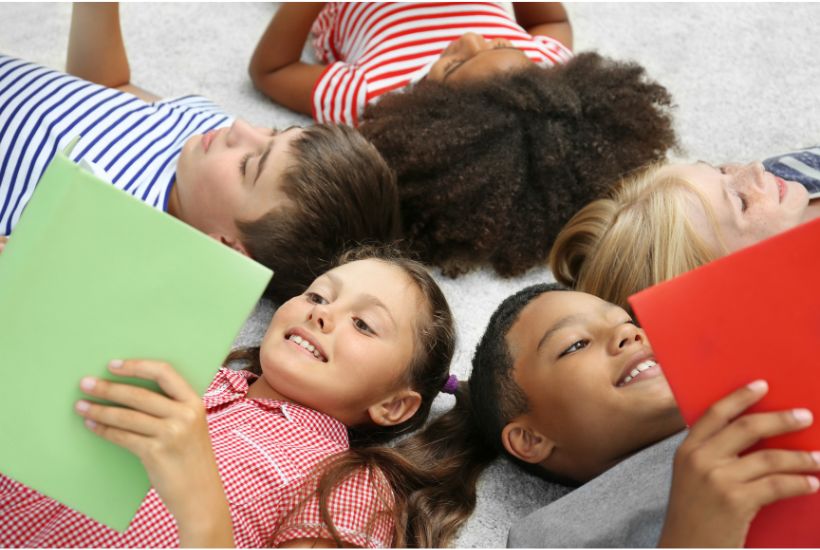8 Amazing Phonics Books to Help Grow a Little Reader

I spent years studying language and sound development as a speech and language pathologist. When it came time to help my kids learn to read, I was disappointed in the phonics books that I saw most often. I wanted books that followed the rules of phonics and slowly progressed in difficulty and I often found that there was absolutely no rhyme or reason to the order of these books.
*Phonics Books Post contains affiliate links. Purchases made through links result in a small commission to us at no cost to you. Some books have been gifted. All opinions are our own.
Best Phonics Reader Books

Charge into Reading Decodable Reader (stage 1) by Brooke Vitale and Katarzyna Jasinka
This is the first of an 8-stage reading program that I think is absolutely wonderful. This first set concentrates on short vowel sounds with ONE vowel sound per book.
The inner cover of each book has a list of the words that are included in the book as well as the high-frequency words that are in the story. Each book has an adorable story and at the end, there are comprehension questions! Eg: Match the sentence to the picture.
The literacy activities at the end reinforce the reading and understanding. These phonics books allow children to learn and master one phonetic sound at a time for a lifetime of reading success. As a speech therapist, I have to say these are my all-time favorite phonics reader books.

Starfall Learn to Read Phonics Books by Blue Mountain Arts
I love these phonics books so much that they are what I used when my three children were learning to read. I am not sure why these books are not more popular considering they have a wonderful “learn to read” computer program and app to accompany these books.
This program was developed and tested in a classroom and pays specific attention to phonemic awareness (the sounds that each letter makes). This program is systematic in that it starts with a CVC (Consonant vowel Consonant) pattern like, Zac or rat for consistency when first learning how to read. These are excellent phonics reader books that are very underrated.

Usborne Phonics Readers 12 Book Collection by Russell Punter, Lesley Sims, Phil Roxbee Cox
This set of phonics reader books comes with 12 books: Big Pig on a Dig, Goose on the Loose, Fat Cat on a Mat, Toad Makes a Road, Ted’s Shed, Fox on a Box, Sam Sheep Can’t Sleep, Mouse Moves House, Frog on a Log, Shark in the Park, Ted in a Red Bed, and Hen’s Pens.
Each book in this series works within a word family ranging in difficulty from easier to harder. For example, Big Pig uses the short i sound which is a lower level than Shark in the Park since the “ar” is a different vowel sound than the a in the word cat.
Like the Charge into Reading books, these each have a list of the vocabulary words at the beginning along with the high-frequency words in each book. I would say that these are for children who already have a basic grasp of sound-letter correspondence.
More Phonics Reading Books

Hooked on Phonics
This is a reading program that has 8 levels of phonics books that are each geared toward specific foundational goals in order to help little learners become confident readers. The levels start with identifying letters and increasing phonemic awareness.
The books gradually move through rhyming, Identifying sounds, sight words, vowel sounds, and more. These are tried and true phonics reader books.

Learn to Read Phonics Storybooks by Laurin Brainard
This phonics book is perfect for a very beginning reader. It has 25 phonics-based stories inside. The first 7 stories each have a single word family and the later stories get more complex with more than one word family within the story.
I think that as children are beginning to read, following rules and having consistency leads to less frustration. Higher success can lead to more enjoyment and thus, will help you grow an independent reader.
Popular Phonics Books for Kids
I put these books under the title of popular because these are phonics books that you will likely see everywhere and have recommended to you time and time again. However, there are a number of reasons that I am not including these books in our list of favorites and I will actually explain why in the description of each book.

Bob Books- Set 1 Beginning Readers Box Set by Bobby Lynn Maslen
These are the most popular phonics books for kids and I honestly do not understand why. There are so many things that I really dislike about this beginning reader set.
The books are 12 pages each with limited words which is great. However, the limited sight words are not identified before the child begins reading the book. The books also progress in a way that does not seem intuitive to me. The books introduce vowels and consonants simultaneously. From my experience, it is the vowels that are the most difficult for kids to learn in a CVC word. Books that are that change vowel sounds are an easier progression for most children.

Step Into Reading Paw Patrol Phonics Box Set by Jennifer Liberts
This popular phonics book has a few things that they tried to do right. The beginning of the book has a list of all the words you will be seeing throughout the book. They are also based on popular characters which can be very motivational for kids
But, like the Pete the Cat books, there are very limited words that have the actual target sound and there are a lot of sight words introduced simultaneously. Words like “quick” and “trike” are very difficult words because of the consonant blends. These are also uncommon words to include in a book in a set that is supposed to be the short a sound.

I Can Read Pete the Cat Phonics Books by James Dean
This is a set of twelve phonics reader, books. At first glance, they are great, because they are divided into short and long vowel sounds and have familiar characters.
However, the words in this book of very long, and will be very overwhelming for a beginning reader. For example, the second page of the first book (short a sound) says “He eats Bananas for breakfast.”
The only word in that sentence that has the short a sound is the word banana which happens to be 2 syllables and 3 more letters than a CVC word. It is too long. “breakfast” is also not on the list of beginning sight words a new reader should be learning. Words like the, he, she, there, what, etc. are much more appropriate.
Frequently Asked Questions
What is Phonics and Why is it Important?
Phonics is the ability to understand the correlation between sounds and letters. This is the first active step in learning how to read.
There are many pre-reading skills that are important to know BEFORE you begin the actual process of teaching your child to read

The Importance of Reading and 7 Helpful Reading Readiness Tips
If you are looking for information on reading readiness and do not know where to start, this is the first post in the importance of reading series that will help you navigate all the ins and outs of creating a lifelong love of books.
